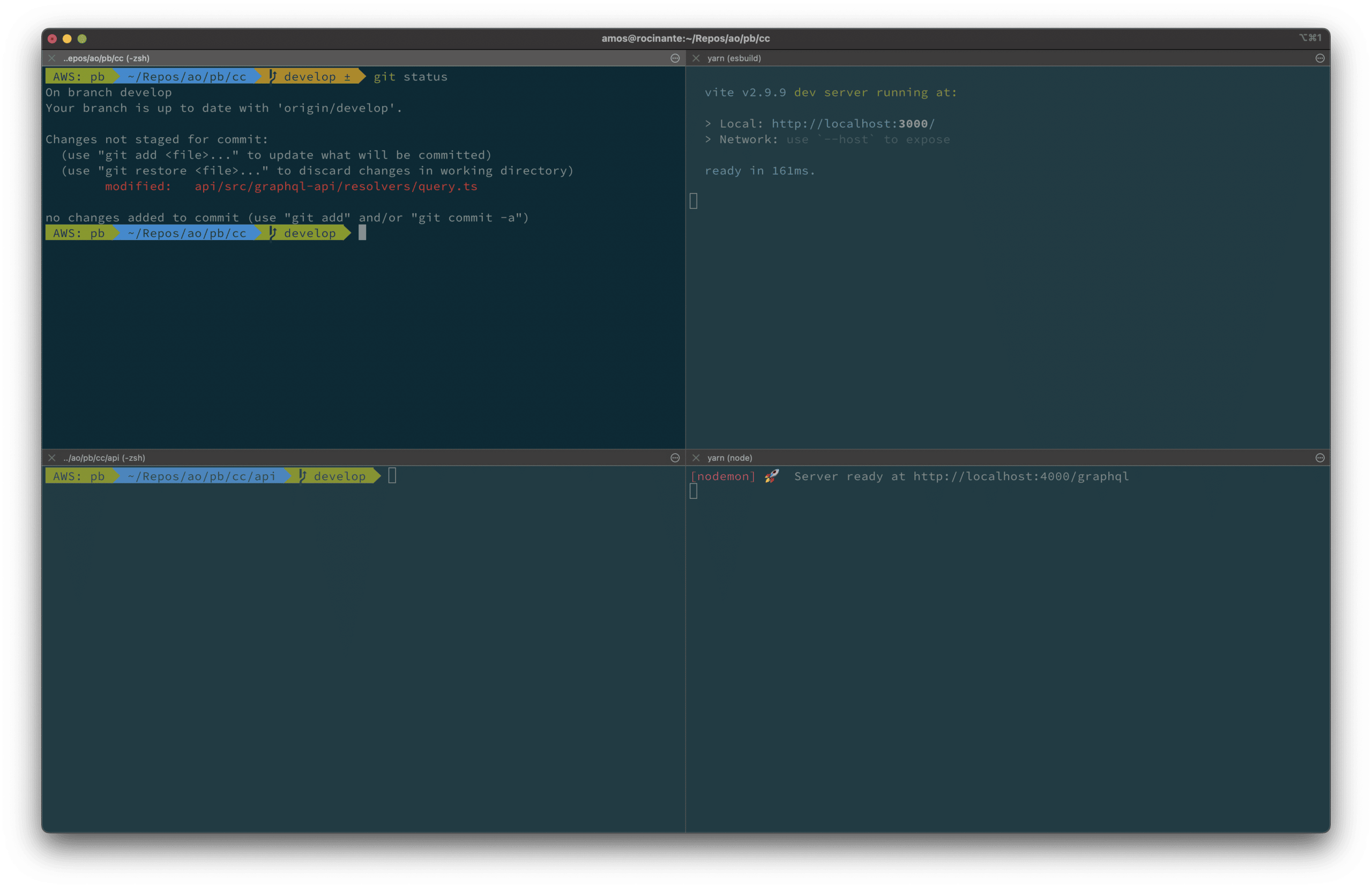

macOS Development Setup: Settings, Applications & More
source link: https://spin.atomicobject.com/2022/06/15/macos-development-setup/
Go to the source link to view the article. You can view the picture content, updated content and better typesetting reading experience. If the link is broken, please click the button below to view the snapshot at that time.
My Comprehensive macOS Development Setup
Recently, I bought a new M1 MacBook Pro after using Intel MacBooks for the last 10 years. Within the first few days of using it, I was immediately hooked. It is, by far, the best computer I’ve owned in my professional and personal life. I wanted to set this up completely from scratch, without using the migration assistant or importing from a backup. This felt like a good time to codify some of the settings and applications I use and recommend to other folks. So, here’s a look at my comprehensive macOS development setup.
During setup, I sign in with my iCloud account to sync contacts, messages, and calendar events. I enable touch ID and disable Siri.
First Steps
Immediately, I copy a few key files from my previous computer.
.zshrc,.zprofile,.zshenv,.history~/.aws/~/.vimrc~/.gitconfig
Note: It’s nice to skip all of the git config --global setup here, but otherwise you may need to specify things like user.name, user.email, pull.ff, and alias (among others).
~/.ssh/(I shouldn’t do this, but it’s easier than updating my SSH keys everywhere. I cycle these after I’ve finished setting up, but this is one less step during this process)~/bin/(a collection of scripts I’ve written, also included in my$PATH)
Next, I download a few key applications from the internet:
Some of the above may be available in Homebrew Cask, but I don’t mind downloading them by hand.
Homebrew
brew install \
wget \
exa \
nodenv \
direnv \
fasd \
fzf \
shellcheck \
tldr \
jq \
fd \
neovim \
ripgrep \
tmux \
up \
yarn \
telnet \
git-extras
Note: Some of these have prompts at the end for additional installation instructions. One in particular is fzf:
- add
set rtp+=/opt/homebrew/opt/fzfto.vimrc - run
/opt/homebrew/opt/fzf/installto install keybindings, autocomplete, and history search
macOS settings
Keyboard
- Set to fastest “Key Repeat”
- Set to shortest “Delay Until Repeat”
- Use Modified Keys -> Remap “Caps Lock” to “Control”
- Add new Colemak input source, can switch between with Control + Option + Space
- Disable
Use smart quotes and dashes - Disable curly quotes, use
" and ' - Use F1, F2, etc. keys as standard function keys
- Disable
Capitalize word automatically - Disable
Add period with double-space
Trackpad
- Tap to click
Accessibility
- Zoom > Enable
Use scroll gesture with modifier keys to zoom - Pointer Control > Trackpad Options > Enable Dragging > Three Finger Drag
- Turn hiding on
- Set size to ~20%
System settings
# Finder: allow quitting via ⌘ + Q; doing so will also hide desktop icons
defaults write com.apple.finder QuitMenuItem -bool true
# Finder: show hidden files by default
defaults write com.apple.finder AppleShowAllFiles -bool true
# Finder: show all filename extensions
defaults write NSGlobalDomain AppleShowAllExtensions -bool true
# Finder: show status bar
defaults write com.apple.finder ShowStatusBar -bool true
# Finder: show path bar
defaults write com.apple.finder ShowPathbar -bool true
# Disable the warning when changing a file extension
defaults write com.apple.finder FXEnableExtensionChangeWarning -bool false
# Avoid creating .DS_Store files on network or USB volumes
defaults write com.apple.desktopservices DSDontWriteNetworkStores -bool true
defaults write com.apple.desktopservices DSDontWriteUSBStores -bool true
# Show the ~/Library folder
chflags nohidden ~/Library && xattr -d com.apple.FinderInfo ~/Library
# Show the /Volumes folder
sudo chflags nohidden /Volumes
# Disable press-and-hold for keys in favor of key repeat
defaults write NSGlobalDomain ApplePressAndHoldEnabled -bool false
killall Finder;
Additional Application Setup
VS Code
I recommend checking in configuration settings to your project repository. This reduces global setup needed. Some recommended extensions:
- GitHub Copilot
- Prettier
- ESLint
- Live Share
- GraphQL
- Prisma
- DotENV
- GitLens
- ShellCheck
- Todo Tree
- Bookmarks
- change-case
- Markdown All in One
Settings
- Text Editor > Files > Auto Save -> onWindowChange
- Text Editor > Tab Size -> 2
- Text Editor > Bracket Pair Colorization: Independent Color Pool Per Bracket Type -> enable
- Text Editor > Default Formatter -> Prettier
- Text Editor > Guides: Bracket Pairs -> true
- Goto Location: Multiple Definitions -> goto
- Text Editor > Formatting > Format On Save -> Enable
- JavaScript > Preferences: Import Module Specifier -> non-relative
- TypeScript > Preferences: Import Module Specifier -> non-relative
iTerm2
Profiles
- General > Reuse previous sessions’s directory
- Colors > Solarized Dark
- Text > Font -> Source Code Pro for Powerline
- Terminal > Scrollback lines -> Unlimited scrollback
- Keys > Left Option key -> Esc+
- Keys > Right Option key -> Esc+
Window > Save Window Arragement
- Note: I arrange my windows and tabs for my main project and CD into the appropriate directories before saving
Appearance
- Dimming > Dimming amount -> 20

Wrapping Up macOS Development Setup
Ultimately, I really enjoy starting fresh with new computers rather than importing from backups. I tend to go through this process every year or two when I upgrade macOS versions since I typically perform fresh installs. However, I often forget to import certain settings, and I hope this can be a reference for others in the future.
Recommend
About Joyk
Aggregate valuable and interesting links.
Joyk means Joy of geeK